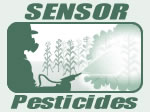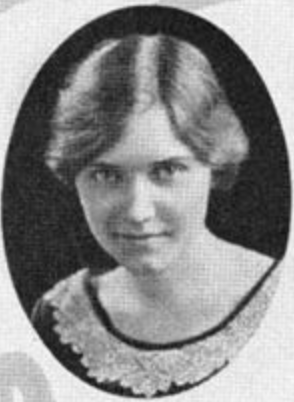Related Research Articles

Bernardino Ramazzini was an Italian physician.

Lois Marie Gibbs is an American environmental activist. A primary organizer of the Love Canal Homeowners Association, Lois Gibbs brought wide public attention to the environmental crisis in Love Canal. Her actions resulted in the evacuation of over 800 families. She founded the non-profit, Clearinghouse for Hazardous Waste in 1981, to help train and support local activists with their environmental work. She continues to work with the organization, renamed the Center for Health, Environment, and Justice (CHEJ).

Aristides Agramonte y Simoni was a Cuban American physician, pathologist and bacteriologist with expertise in tropical medicine. In 1898 George Miller Sternberg appointed him as an Acting Assistant Surgeon in the U.S. Army and sent him to Cuba to study a yellow fever outbreak. He later served on the Yellow Fever Commission, a U.S. Army Commission led by Walter Reed which examined the transmission of yellow fever.
The Nursing Minimum Data Set (NMDS) is a classification system which allows for the standardized collection of essential nursing data. The collected data are meant to provide an accurate description of the nursing process used when providing nursing care. The NMDS allow for the analysis and comparison of nursing data across populations, settings, geographic areas, and time.

Marcus Malvin Key was a public health administrator and practitioner who served as the first director for the National Institute for Occupational Safety and Health (NIOSH) in the U.S. government.

Sentinel Event Notification System for Occupational Risks (SENSOR)-Pesticides is a U.S. state-based surveillance program that monitors pesticide-related illness and injury. It is administered by the National Institute for Occupational Safety and Health (NIOSH), twelve state health agencies participate. NIOSH provides technical support to all participating states. It also provides funding to some states, in conjunction with the US Environmental Protection Agency.

Morton Shelly Hilbert was a professor of public health, environmentalist, and co-founder of Earth Day that was first celebrated on April 22, 1970. He is best known for developing public sanitation systems and sanitary public healthcare facilities throughout the United States, Europe, U.S. Virgin Islands, and developing nations.
Born in Toledo, Ohio, in 1909, Lorin Edgar Kerr was educated at the University of Toledo where he received his B.A. in 1931 and at the University of Michigan, receiving his M.D. in 1935 and a M.S.P.H. in 1939. From 1937 to 1944 he served in municipal and county public health departments in Ohio and Michigan. Kerr joined the United States Public Health Service in 1944, first in the War Food Administration and later in the Industrial Hygiene Division. While with the Industrial Hygiene Division he provided consultant services for labor unions which were then beginning to develop their own medical care programs.

Pearl Louella Kendrick was an American bacteriologist known for co-developing the first successful whooping cough vaccine alongside fellow Michigan Department of Public Health scientist Grace Eldering and chemist Loney Gordon in the 1930s. In the decades after the initial pertussis vaccine rollout, Kendrick contributed to the promotion of international vaccine standards in Latin America and the Soviet Union. Kendrick and her colleagues also developed a 3-in-1 shot for diphtheria, pertussis, and tetanus called the DTP vaccine which was initially released in 1948.

Lemuel Shattuck was a Boston politician, historian, bookseller and publisher.
George Rosen (1910–1977) was an American physician, public health administrator, journal editor, and medical historian. His major interests were in the relationship of social, economic and cultural factors upon health.

Denise Kandel is an American medical sociologist and epidemiologist, Professor of Sociomedical Sciences and Psychiatry at Columbia University and Head of the Department of Epidemiology of Substance Abuse at the New York State Psychiatric Institute. She is known for her epidemiological longitudinal studies on the sequence of first-time use of various legal and illegal drugs, carried out beginning in the 1970s and continuing until at least 2016.
Charles Lee is an American environmental justice activist and the senior policy advisor in the Office of Environmental Justice at the Environmental Protection Agency. Previously, he served as the director of the Office of Environmental Justice, and before that, he was the director of the Environmental Justice Program at the United Church of Christ for 15 years.
Thorne Auchter is the former Director of the U.S. Occupational Safety & Health Administration (OSHA) from 1981 to 1984, during the early part of the Reagan Administration, replacing former President Jimmy Carter's appointee Eula Bingham. He is also the former director of the American lobbying group Federal Focus' Institute for Regulatory Policy.

Robert J. Anderson was the chief of the Communicable Disease Center (CDC) of the United States Public Health Service, forerunner to the modern Centers for Disease Control and Prevention, from October 1, 1956, to June 30, 1960.
Paul Bertau Cornely was an American physician, public health pioneer and civil rights activist. In 1934 he became the first African American person to earn a doctoral degree in public health. He was elected President of the American Public Health Association in 1970.

Olive M. Whitlock Klump was an American nurse who was the first industrial nurse to work for the United States federal government, as part of the U.S. Public Health Service's Division of Industrial Hygiene, from 1939 to 1943. She later directed the Los Angeles County Health Department's Bureau of Public Health Nursing for over two decades.
Ana Abraído-Lanza is an American behavioral psychologist who is a professor at the New York University. Her research considers the cultural and structural factors that impact mental and physical health amongst Latino communities. She serves as Vice Dean of the School of Public Health.
The Royal Commission on the Health and Safety of Workers in Mines, informally known as the Ham Commission, was a 1974 Canadian royal commission founded to investigate and report on the safety of underground mines.

Anne Magdalen Bahlke was an American physician, medical researcher, and public health official.
References
- 1 2 3 4 5 6 7 8 9 "An Evening with Terence Carroll". 2005-01-03. Archived from the original on 2007-09-28. Retrieved 2007-07-15.
- ↑ "Columbia Magazine".
- ↑ Carroll, T. E. (1960). "Letter to the Editor". American Journal of Public Health. 60 (1): 6–8. doi:10.2105/AJPH.60.1.6. PMC 1349573 . PMID 18018281.
- ↑ Carroll, T. E. (1965). "Workmen's Compensation and Comprehensive Health Services: Existing and Emerging Patterns". American Journal of Public Health and the Nation's Health. 55 (2): 215–224. doi:10.2105/ajph.55.2.215. PMC 1256180 . PMID 14269205.
- ↑ Kerr, L. E. (undated). Lorin Edgar Kerr papers, 1941-1981 Manuscripts and Archives, Yale University Library. "Holdings: Lorin Edgar Kerr papers". Archived from the original on 2011-07-20. Retrieved 2011-02-09.
- ↑ Derickson, A (1991). "The United Mine Workers of America and the Recognition of Occupational Respiratory Diseases, 1902-1968". American Journal of Public Health. 81 (6): 782–790. doi:10.2105/ajph.81.6.782. PMC 1405142 . PMID 1827571.
- ↑ "RRJB | Sidney Hillman Health Center: Health Center Services". Archived from the original on 2011-07-28. Retrieved 2011-02-09.
- ↑ "About Us". www.gdahc.org. Archived from the original on 2010-04-13.
- ↑ "History | Michigan Credit Union History Credit Union ONE".
- ↑ Brown, T. M. (2011). "Milton Terris (1915-2002) Outspoken advocate for progressive public health policy". American Journal of Public Health. 101 (2): 253. doi:10.2105/ajph.2010.196667. PMC 3020197 . PMID 21228289.
- ↑ Pepper, M (2007). "In Memoriam: The Passing of the Terris Era for JPHP". Journal of Public Health Policy. 28 (1): 162–164. doi:10.1057/palgrave.jphp.3200111. PMID 17363947. S2CID 21594757.
- ↑ NAPHP website Archived 2007-08-23 at the Wayback Machine